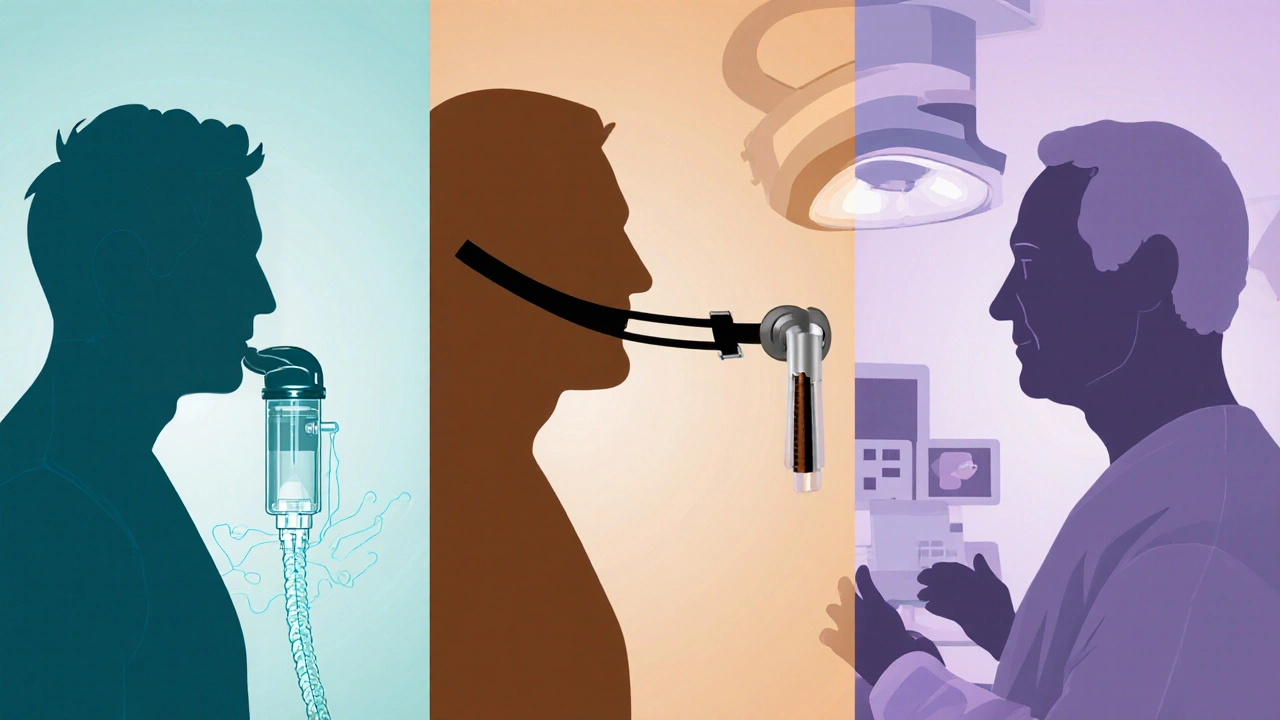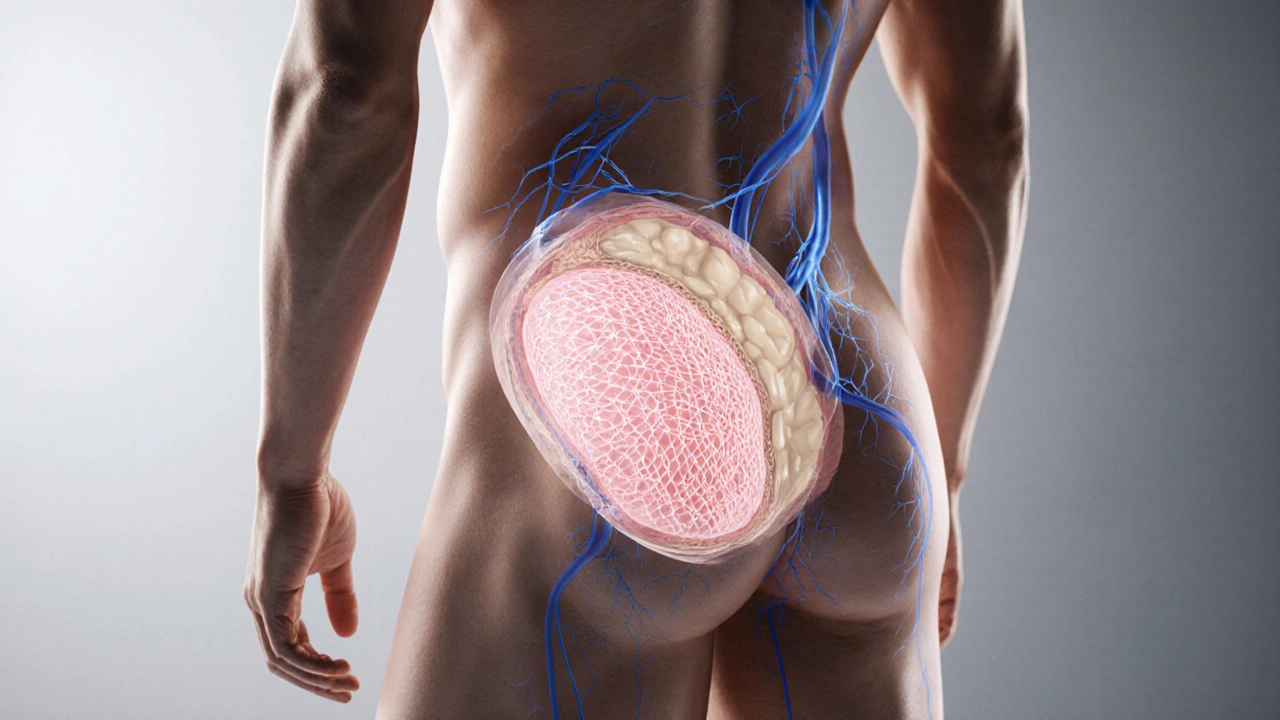Penis Enlargement Effectiveness by Age
Effectiveness & Safety Summary
| Method | 18-30 | 31-45 | 46-60 | 60+ |
|---|---|---|---|---|
| Vacuum Pump | Good temporary gain; low risk | Moderate gain; watch for bruising | Limited gain; higher vascular fragility | Minimal gain; strong caution advised |
| Penile Traction | 2-3 cm over 6 months; best results | 1-2 cm; consistent use needed | ≤1 cm; tissue elasticity reduced | Rarely effective; risk of micro-injury |
| Surgical Implant | High satisfaction; low complication rate | High satisfaction; moderate complication risk | Moderate satisfaction; infection risk ↑ | Low satisfaction; healing delayed, higher complications |
| Injectable Fillers | Noticeable girth increase; reversible | Noticeable; occasional swelling | Reduced durability; higher edema | Limited benefit; risk of granuloma |
| Oral Supplements | Placebo-level gains; safe | Placebo-level gains; safe | Placebo-level gains; monitor interactions | Placebo-level gains; watch cardiovascular meds |
When men start Googling penis enlargement, the first thing they overlook is age. The body’s biology, hormone levels, and tissue elasticity all shift as the years go by, and those changes dictate what, if anything, will work safely. This article breaks down the science, reviews the most common methods, and tells you what to expect at every stage of life.
- Penile size stabilizes after puberty - age only alters method safety and effectiveness.
- Hormonal decline, especially testosterone, reduces tissue responsiveness in men over 40.
- Non‑surgical methods (traction, pumps) have modest gains but work best with younger, healthier tissue.
- Surgical options carry higher risk for older men but may be the only route for significant change.
- Realistic expectations and health‑first thinking prevent disappointment and complications.
Biological Limits of Penile Growth
First, it helps to know what the body can actually do. The penis, like other organs, grows primarily during puberty under the influence of sex hormones. By the late teens, the penile shaft reaches its final length and girth. Penis enlargement refers to any technique-surgical, mechanical, or pharmaceutical-intended to increase penis size beyond its natural adult dimensions therefore works against a finished biological blueprint.
Age doesn’t make the penis shrink on its own, but the surrounding tissues-smooth muscle, connective fibers, and blood vessels-undergo changes. Collagen becomes stiffer, elastic fibers lose flexibility, and vascular health can decline, especially after 50. Those shifts affect how well a method can remodel tissue.
Hormonal Influence and Aging
Testosterone is the hormone that fuels not just libido but also the regenerative capacity of penile tissue. Men in their 20s and 30s typically maintain serum testosterone levels between 300-1000ng/dL. After 40, levels often dip by 1-2% per year, and by 60, many fall below the clinical threshold for hypogonadism.
Testosterone is the primary male sex hormone that promotes muscle growth, bone density, and tissue repair loss means slower collagen turnover and weaker erectile tissue response. For enlargement methods that rely on mechanical stretching or increased blood flow, reduced testosterone can blunt results and raise the risk of micro‑tears.
Overview of Common Enlargement Methods
Below are the most widely discussed approaches, each defined once with schema markup for clear entity mapping.
- Vacuum Pump a device that creates negative pressure around the penis, drawing blood into the corpora cavernosa to induce temporary engorgement. Used for both erectile dysfunction and size training.
- Penile Traction Device a medical‑grade apparatus that applies constant, low‑intensity stretch to the shaft for several hours a day, promoting tissue expansion through cellular remodeling. Often marketed as a non‑surgical growth solution.
- Surgical Implant the insertion of inflatable or semi‑rigid rods into the penile shaft, typically reserved for severe erectile dysfunction but also used for cosmetic lengthening. Involves anesthesia and recovery time.
- Injectable Fillers subdermal injections of hyaluronic acid or biocompatible polymers aimed at increasing girth shortly after treatment. Effects are temporary, lasting 12-18 months.
- Oral Supplements herbal or vitamin blends claiming to boost blood flow, hormone levels, or collagen production. Scientific support is limited and results vary.

Age‑Based Effectiveness Chart
| Method | 18‑30 | 31‑45 | 46‑60 | 60+ |
|---|---|---|---|---|
| Vacuum Pump | Good temporary gain; low risk | Moderate gain; watch for bruising | Limited gain; higher vascular fragility | Minimal gain; strong caution advised |
| Penile Traction | 2‑3cm over 6months; best results | 1‑2cm; consistent use needed | ≤1cm; tissue elasticity reduced | Rarely effective; risk of micro‑injury |
| Surgical Implant | High satisfaction; low complication rate | High satisfaction; moderate complication risk | Moderate satisfaction; infection risk ↑ | Low satisfaction; healing delayed, higher complications |
| Injectable Fillers | Noticeable girth increase; reversible | Noticeable; occasional swelling | Reduced durability; higher edema | Limited benefit; risk of granuloma |
| Oral Supplements | Placebo‑level gains; safe | Placebo‑level gains; safe | Placebo‑level gains; monitor interactions | Placebo‑level gains; watch cardiovascular meds |
Safety Considerations and Contra‑Indications
Every method carries a risk profile that shifts with age:
- Vascular health: Older men often have atherosclerosis, making vacuum pumps more likely to cause vascular injury.
- Skin elasticity: Traction devices can cause micro‑tears in older, less elastic skin, leading to scar tissue formation.
- Surgical healing: After 60, wound healing slows, and the chance of infection after implants rises from ~5% to over 12%.
- Hormone interactions: Some oral supplements contain DHEA or ginseng, which may interfere with prescription testosterone therapy or blood thinners.
Before starting any program, a full medical check‑up-including blood pressure, lipid profile, and testosterone level-helps identify hidden risks.
Practical Recommendations by Age Group
18‑30: Focus on non‑invasive methods. Traction for 4‑6hours daily combined with occasional pump sessions yields the most measurable gains. Keep testosterone within normal range; a balanced diet, strength training, and adequate sleep support tissue remodeling.
31‑45: Continue traction but add pelvic floor (Kegel) exercises to improve vascular flow. If seeking larger jumps, discuss surgical options with a board‑certified urologist; success rates remain high when comorbidities are low.
46‑60: Prioritize health over size. Optimize cardiovascular health-exercise, omega‑3s, smoking cessation-to preserve blood flow. Consider low‑risk fillers for modest girth increase if cosmetic concerns dominate, but avoid aggressive traction.
60+: Re‑evaluate the goal. Most men find that confidence improves more with counseling or couples therapy than with physical change. If a procedure is essential, choose a reputable surgeon and expect a longer recovery timeline.
Bottom Line
Age doesn’t magically shrink the penis, but it reshapes the environment in which enlargement methods operate. Younger tissue responds better to mechanical stretch, while older tissue demands stricter safety measures. Understanding your hormonal profile, vascular health, and realistic expectations will guide you toward the safest path-whether that’s a daily traction routine, a single surgical implant, or simply embracing the size you have.

Frequently Asked Questions
Can a 40‑year‑old man still increase penis length?
Yes, but gains are modest. A medical‑grade traction device used consistently for 4-6hours daily can add up to 1cm over six months. Success hinges on tissue elasticity and absence of vascular disease.
Are vacuum pumps safe for men over 60?
They can be used, but the risk of bruising, hematoma, and vascular injury increases with age. A low‑pressure setting and short sessions (5‑10minutes) are advised, and a doctor should approve any regular use.
Do oral supplements actually work?
Scientific evidence is limited. Most supplements improve blood flow slightly, which may enhance erection quality but rarely adds measurable length or girth. They're generally safe but should not replace proven methods.
What’s the recovery time after a penile implant?
Typical recovery is 4‑6 weeks before normal activities resume, with full sexual function returning around 8‑12 weeks. Older patients may need up to 3 months for swelling to subside.
Is it worth getting filler injections for girth?
Fillers provide a temporary boost-about 1‑2cm in circumference-that lasts 12‑18 months. They’re a good option for men seeking a short‑term cosmetic change without surgery, but repeated treatments increase cost and risk of lump formation.






When you stare at a chart that says "age matters" you might think the universe is playing a cruel joke on our biology, but think deeper: the very idea of measuring worth in centimeters is a modern myth that feeds on insecurity. Youth offers elasticity, sure, but it also offers optimism, something older men simply don’t have to lean on when they consider risky procedures. The real question isn’t "what works at 20" but "what does my body truly need at any given stage". If you ignore hormonal context and focus solely on mechanical gain, you’re chasing a mirage that only the naive will ever find satisfying. In short, age is a factor, but it’s not the tyrant some articles make it out to be.